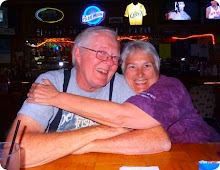Canyon Ferry, MT High 92 Low 62
Off we go to drive around the lake with a couple of detours along the way. Leaving the campground we took a left on Highway 287 towards Townsend. Another left at the stop sign in Townsend onto Highway 12. This is a picture of the main street in Townsend.
About two miles east of Townsend you make another left on Highway 284.
Our first stop was at St. Joseph's Catholic Church which was built in 1875-1876. Paid for with community donations and built by ninety volunteer lay laborers, the church was dedicated on October 22, 1876. It is the state’s oldest standing Roman Catholic church not built by a religious order. After World War II, federal officials planned to upgrade Canyon Ferry Dam and raise the reservoir. The church was in the raised water area and in 1952, St. Joseph’s was moved two and a half miles to this location before water swallowed the land.
The Church was closed while we were there so I took this picture of the interior from their website.
This is the view from the front of the Church. You can see Canyon Ferry Lake in the distance.
More Montana scenes along our way.
Confederate Gulch and Diamond City
Our next detour had us looking for Diamond City, another ghost town up Confederate Gulch.
Gold was first discovered at the gulch by former confederate soldiers in 1864. When the Civil War ended the government issued an amnesty to all former confederate soldiers in Arkansas if they went west by the Missouri River. Some of these soldiers heard of gold discoveries in Montana and decided to try their luck there. They discovered placer gold in a gulch located near the Big Belt Mountains. This later became known as Confederate Gulch.
For a time, Confederate Gulch was the largest community in Montana. In 1866, Montana had a total population of 28,000, and of these, about 10,000 were working in Confederate Gulch.
During its heyday, Diamond City roared both night and day. By 1870, the gold supply at Confederate Gulch had been exhausted, the boom was over and the residents of Diamond City simply picked up and left. Today hardly a trace remains of Diamond City.
We had to ford the creek a couple of times.
We never did find Diamond City and the road was really rough so we finally turned around and went back down to the highway.
Canyon Ferry Dam is a concrete gravity dam on the Missouri River.
After taking a couple more left turns, you are back on Highway 287/12 which takes you back to our campground.
Townsend also has an airport which is just outside our RV park. It is a really busy place some days with small planes and helicopters. It is also used as a training site for forest fires as well as water rescue.
A really beautiful day for a drive.

















































